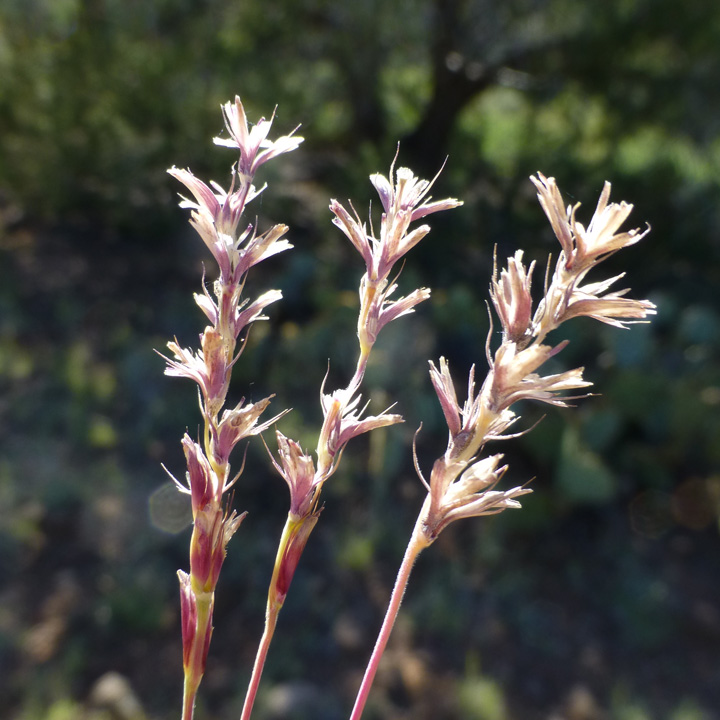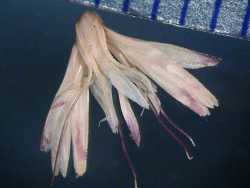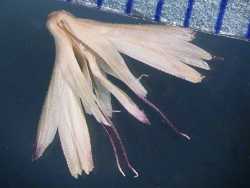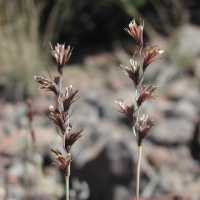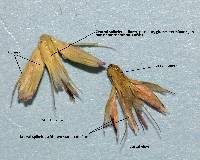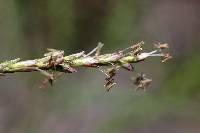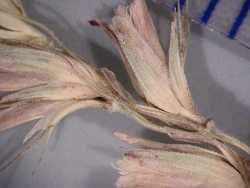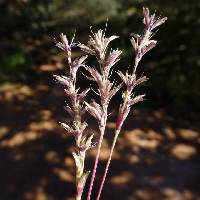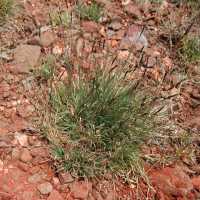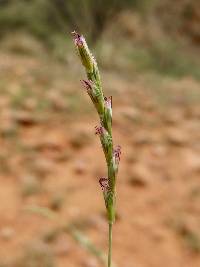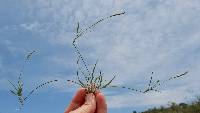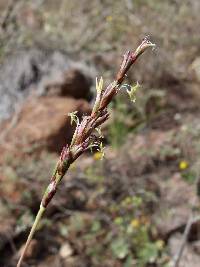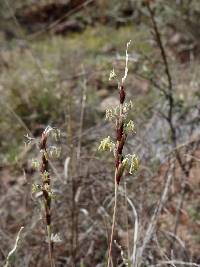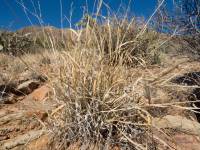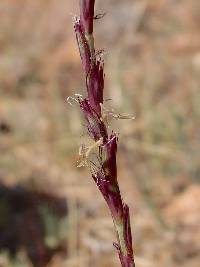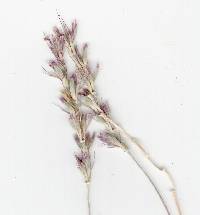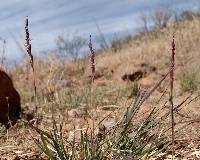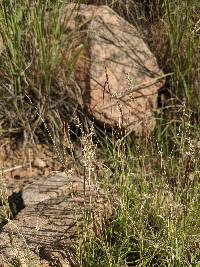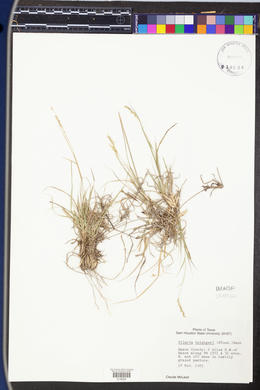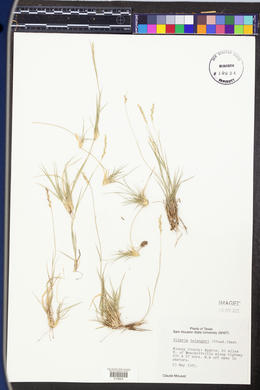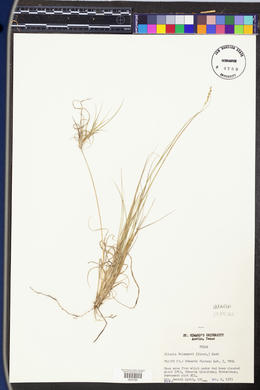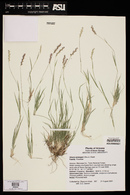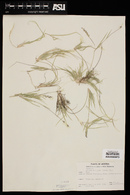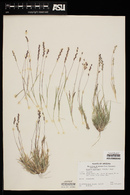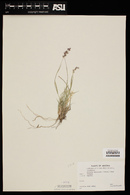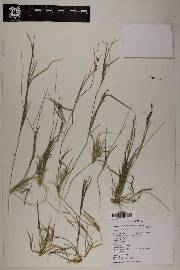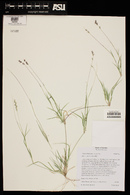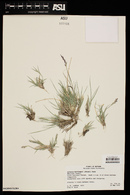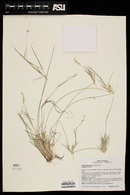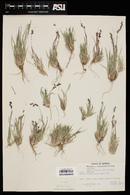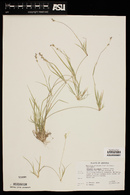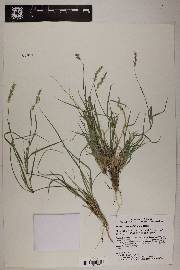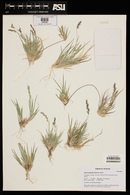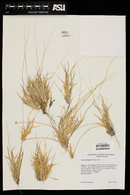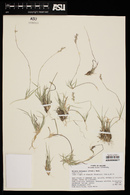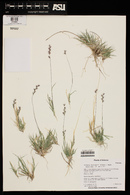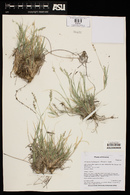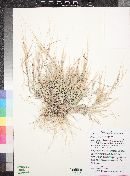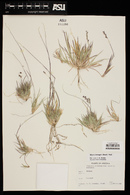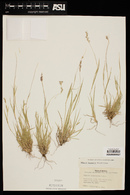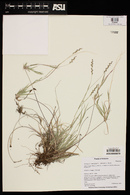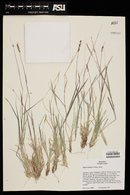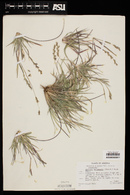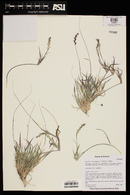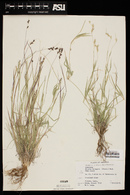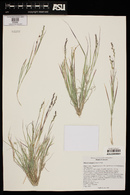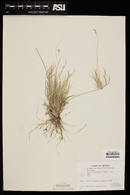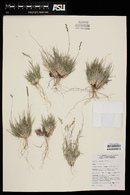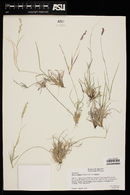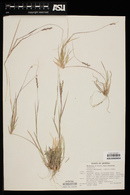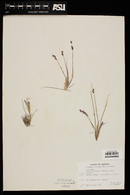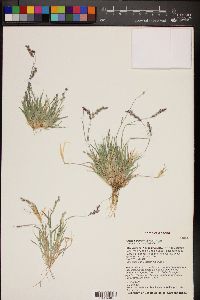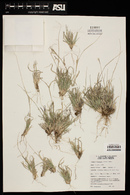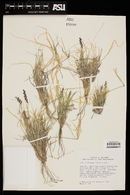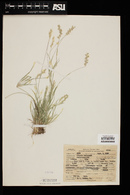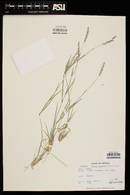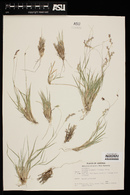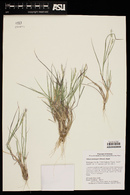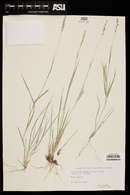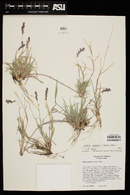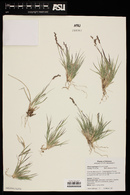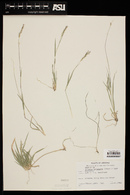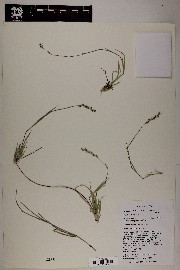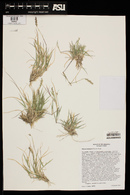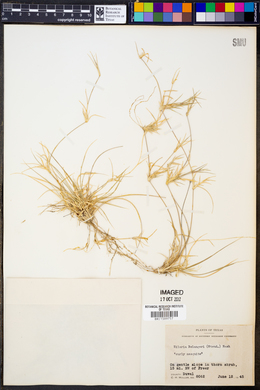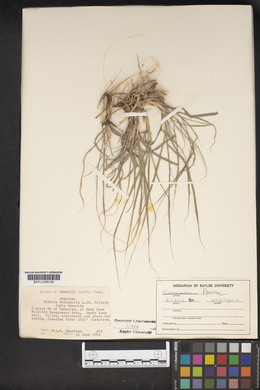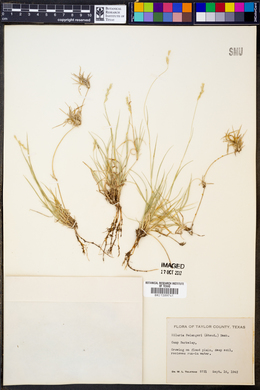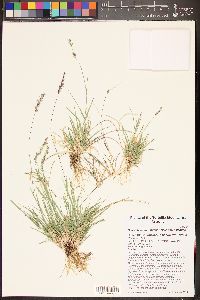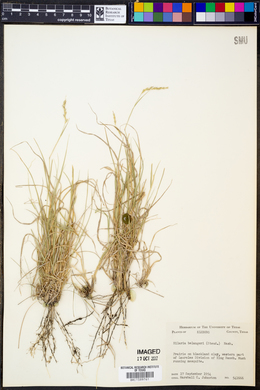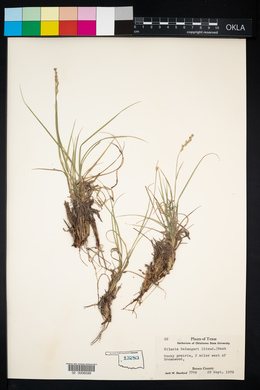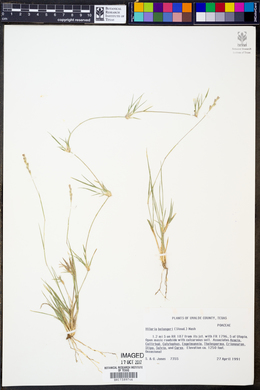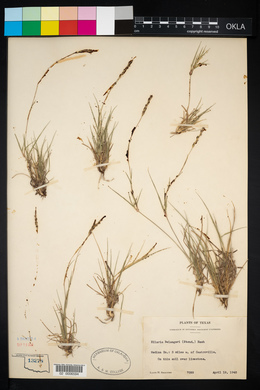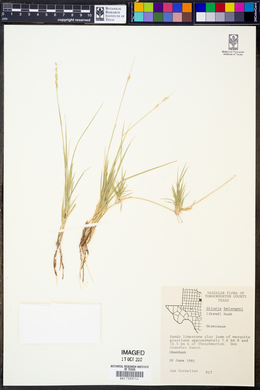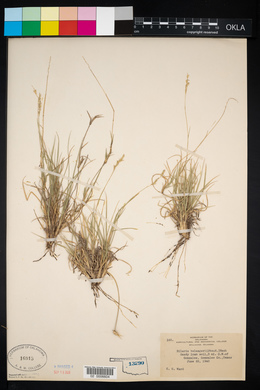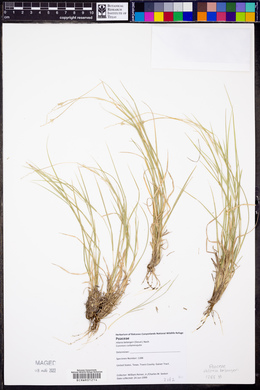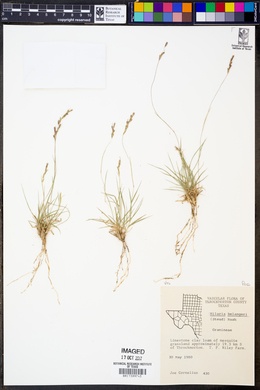Hilaria belangeri
|
|
|
|
Family: Poaceae
Curly-Mesquite, more...curly mesquite grass, Common curleymesquite, curleymesquite, curly mesquite, curlymesquite (es: zacate chino, galleta)
[Hilaria cenchroides var. texana Vasey, moreHilaria texana (Vasey) Nash] |
Plants perennial; cespitose, usually stoloniferous. Culms 5-35 cm, erect; nodes villous. Sheaths striate, glabrous; ligules 1-3 mm, often lacerate; blades 3-15 cm long, 1-3.5 mm wide, adaxial surfaces sparsely pilose, hairs papillose-based, margins sparsely pilose basally, with similar hairs. Panicles 2-4 cm; fascicles 5-8 mm. Lateral spikelets with 2(3) staminate florets, or 1 sterile floret; glumes unequal, thick,indurate, and conspicuously fused basally, thinner distally, asymmetrically lobed, scabrous, pale to purplish, bases sometimes spotted with a few dark glands, margins wide, hyaline, awns 1 or more, attached below midlength, equaling or exceeding the central spikelets, antrorsely scabrous; lower glumes wider, more deeply lobed, with longer awn(s) than the upper glumes; anthers 3, 3-3.7 mm. Central spikelets as long as or longer than the lateral spikelets, with 1 pistillate floret; glumes terminating in 1 or more antrorsely scabrous awns. 2n = 36, 72, 74. Both varieties of Hilaria belangeri are found on mesas and plains within the regions indicated. Dr. David Bogler, USDA NRCS PLANTS Database Perennials, Terrestrial, not aquatic, Stolons or runners present, Stems nodes swollen or brittle, Stems erect or ascending, Stems caespitose, tufted, or clustered, Stems terete, round in cross section, or polygonal, Stem nodes bearded or hairy, Stem internodes hollow, Stems with inflorescence less than 1 m tall, Stems, culms, or scapes exceeding basal leaves, Leaves mostly basal, below middle of stem, Leaves mostly cauline, Leaves conspicuously 2-ranked, distichous, Leaves sheathing at base, Leaf sheath mostly open, or loose, Leaf sheath smooth, glabrous, Leaf sheath and blade differentiated, Leaf blades linear, Leaf blades very narrow or filiform, less than 2 mm wide, Leaf blades mostly flat, Leaf blade margins folded, involute, or conduplicate, Leaf blades mostly glabrous, Leaf blades scabrous, roughened, or wrinkled, Ligule present, Ligule an unfringed eciliate membrane, Inflorescence terminal, Inflorescence solitary, with 1 spike, fascicle, glomerule, head, or cluster per stem or culm, Inflorescence a panicle with narrowly racemose or spicate branches, Inflorescence with 2-10 branches, Inflorescence spikelets arranged in a terminal bilateral spike, Flowers bisexual, Spikelets sessile or subsessile, Spikelets laterally compressed, Spikelet less than 3 mm wide, Spikelets with 1 fertile floret, Spikelet with 1 fertile floret and 1-2 sterile florets, Spikelets 3 per node, Spikelets with 1 terminal fertile floret and 2 lateral staminate or sterile florets, Spikelets bisexual, Spikelets unisexual, Spikelets falling with parts of disarticulating rachis or pedicel, Inflorescence branches deciduous, falling intact, Rachilla or pedicel glabrous, Glumes present, empty bracts, Glumes 2 clearly present, Glumes equal or subequal, Glumes equal to or longer than adjacent lemma, Glumes awned, awn 1-5 mm or longer, Glumes keeled or winged, Glumes 4-7 nerved, Glumes prominently lobed, Lemmas thin, chartaceous, hyaline, cartilaginous, or membranous, Lemma coriaceous, firmer or thicker in texture than the glumes, Lemma 3 nerved, Lemma glabrous, Lemma apex acute or ac uminate, Lemma apex dentate, 3-5 fid, Lemma teeth unequal. central tooth longer, Lemma awnless, Lemma mucronate, very shortly beaked or awned, less than 1-2 mm, Lemma margins thin, lying flat, Lemma straight, Palea present, well developed, Palea membranous, hyaline, Palea about equal to lemma, Stamens 3, Styles 2-fid, deeply 2-branched, Stigmas 2, Fruit - caryopsis.
FNA 2003, Gould 1980 Common Name: curly-mesquite Duration: Perennial Nativity: Native Lifeform: Graminoid General: Low tufted perennial grass up to 30 cm tall; stems stoloniferous and sod-forming, curving over and rooting at nodes; usually only upper one or two internodes erect; nodes with dense tufts of long white hairs. Vegetative: Blades flat and thin, 2 mm wide, 5-20 cm long, flat to arcuate with some pustulate hairs; sheath open, margins overlapping; ligule membranous, obtuse to truncate, lacerate, 0.5-1 mm long. Inflorescence: Spikes exserted on slender, filiform stem apices, less than 5 cm long with 4-9 spikelet clusters; the clusters have 3 spikelets and disarticulate as a unit, leaving zig-zag rachises; lateral spikelets with 2(3) staminate florets, or 1 sterile floret, the glumes variable, the inner reduced and outer broadened above, notched or lobed, with midnerved extended into short awn; central spikelets as long as or longer than the lateral spikelets, with 1 pistillate floret, glumes terminating in 1 or more antrorsely scabrous awns, the awns 4-5 mm; lemmas thin, awnless, about as long as glumes; caryopsis free from palea, mostly 1.5-2 mm long, flattened and oblong. Ecology: Rocky slopes, dry hillsides and sandy plains; 3,000-6,000 ft (914-1829 m); flowers July-November. Distribution: AZ, NM, s TX; south to s MEX. Notes: The genus is distinguished by the rigid inflorescence spikes which produce groups of 3 sessile, awned spikelets, that when mature, have conspicuous tan-white papery bracts (glumes) which often splay out. The 3 spikelets fall as a unit and leave a characteristic zig-zag naked seed stalk. H. belangeri distinguished by being smaller >35 cm and most often with runners producing new shoots and plants which can often develop into large colonies. Ethnobotany: Unknown Etymology: Hilaria is named for Auguste St. Hilaire (1779-1853), a French naturalist; the specific epithet honors another French naturalist, Charles Paulus Belanger (1805-1881). Synonyms: None Editor: SBuckley 2010, FSCoburn 2014 |
|
|
|

